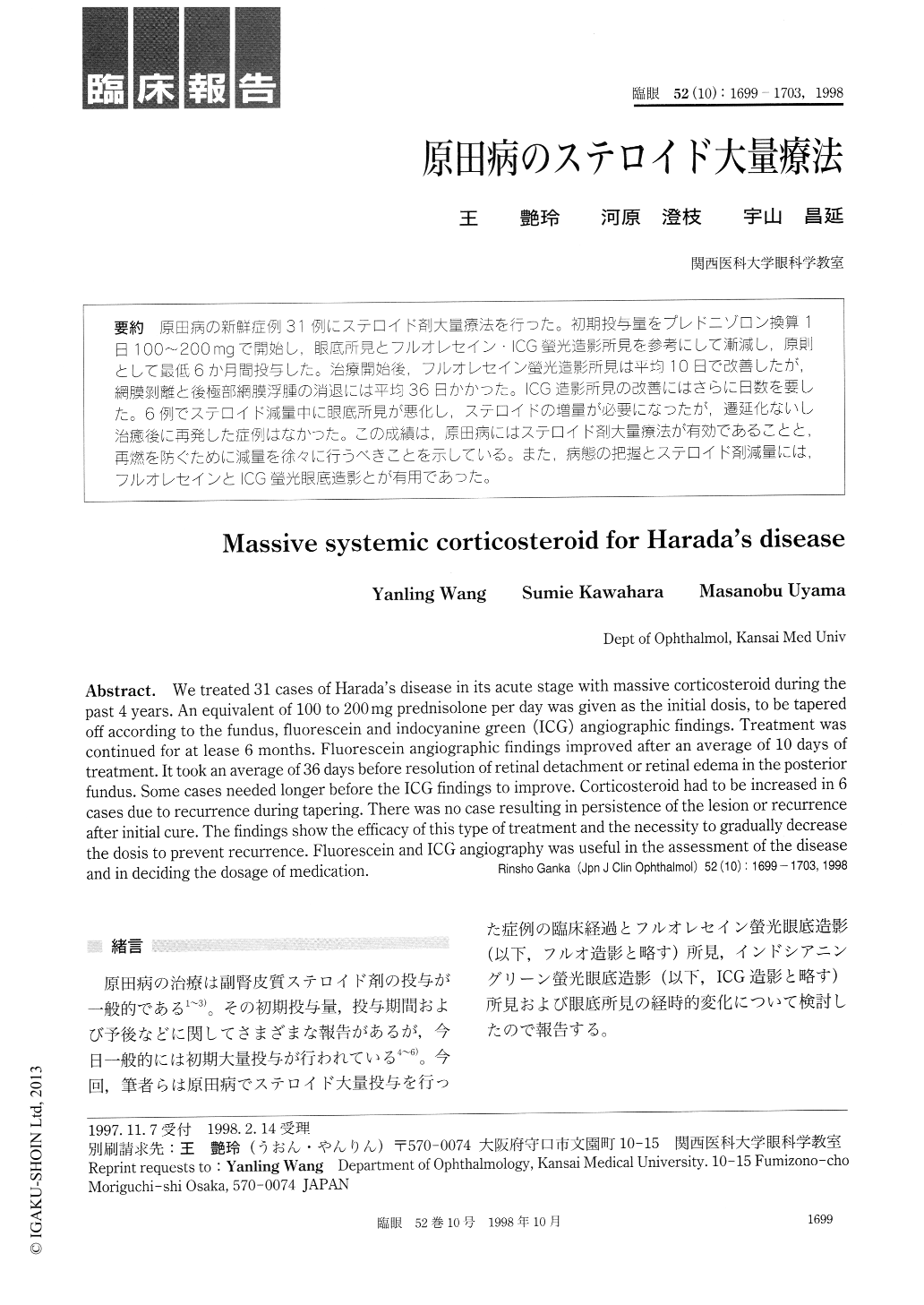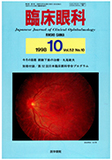Japanese
English
- 有料閲覧
- Abstract 文献概要
- 1ページ目 Look Inside
原田病の新鮮症例31例にステロイド剤大量療法を行った。初期投与量をプレドニゾロン換算1日100〜200mgで開始し,眼底所見とフルオレセイン・ICG螢光造影所見を参考にして漸減し,原則として最低6か月間投与した。治療開始後,フルオレセイン螢光造影所見は平均10日で改善したが,網膜剥離と後極部網膜浮腫の消退には平均36日かかった。ICG造影所見の改善にはさらに日数を要した。6例でステロイド減量中に眼底所見が悪化し,ステロイドの増量が必要になったが,遷延化ないし治癒後に再発した症例はなかった。この成績は,原田病にはステロイド剤大量療法が有効であることと,再燃を防ぐために減量を徐々に行うべきことを示している。また,病態の把握とステロイド剤減量には,フルオレセインとICG螢光眼底造影とが有用であった。
We treated 31 cases of Harada's disease in its acute stage with massive corticosteroid during the past 4 years. An equivalent of 100 to 200 mg prednisolone per day was given as the initial dosis, to be tapered off according to the fundus, fluorescein and indocyanine green (ICG) angiographic findings. Treatment was continued for at lease 6 months. Fluorescein angiographic findings improved after an average of 10 days of treatment. It took an average of 36 days before resolution of retinal detachment or retinal edema in the posterior fundus. Some cases needed longer before the ICG findings to improve. Corticosteroid had to be increased in 6 cases due to recurrence during tapering. There was no case resulting in persistence of the lesion or recurrence after initial cure. The findings show the efficacy of this type of treatment and the necessity to gradually decrease the dosis to prevent recurrence. Fluorescein and ICG angiography was useful in the assessment of the disease and in deciding the dosage of medication.

Copyright © 1998, Igaku-Shoin Ltd. All rights reserved.


